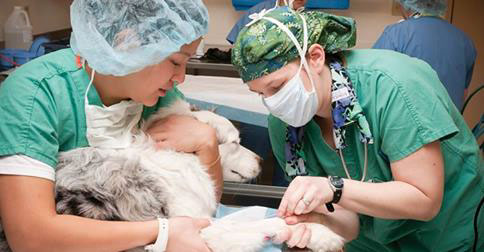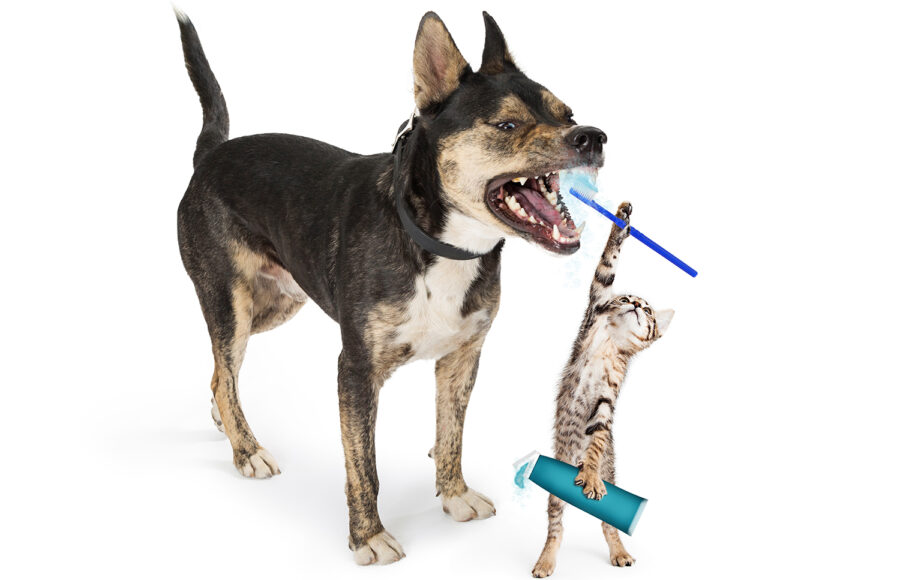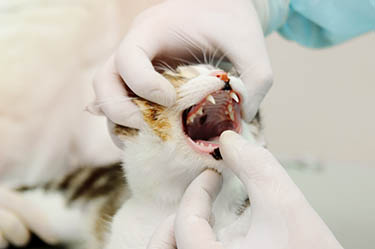
When Your Pet Needs Anesthesia
Some veterinary procedures need to be performed with your pet under anesthesia (for example: dentistry, surgery, and some diagnostic imaging). Simply put, anesthesia is a controlled unconsciousness, where your pet’s level of consciousness is controlled so they don’t feel pain and don’t move. We certainly don’t want our pets to feel pain whenever possible, and it’s important that they don’t move because precision is required during these procedures and movement could lead to complications. Most healthy pets – even senior pets – don’t have any problems with anesthesia and, in general, the risks are more closely related to the procedure being done and your pet’s general health than to the anesthesia itself.
Most of us are anxious about going under anesthesia ourselves, so it’s understandable to be anxious about your pet being anesthetized. Anesthesia for animals has come a long way and is safer than it ever was before, and a well-trained veterinary team further reduces your pet’s risk.
Like any medical procedure, anesthesia does have risks. These risks can run from minor problems, such as mild vomiting after recovery from anesthesia, to life-threatening problems such as cardiac arrest or stroke. Anesthesia-related deaths are rare, though, and while complications can occur, the veterinary team will take all of the necessary precautions to ensure that your pet is safe and can handle anesthesia. The risks of anesthesia should always be considered along with the benefits, and the risks and benefits of any alternatives to anesthesia should also be considered. In an emergency, life-threatening situation, the risks of anesthesia are usually minimal compared to the risks of not performing the emergency procedure. For elective procedures, there’s more opportunity to postpone anesthesia if some risks that are present can be reduced by treatment prior to the anesthesia and procedure.
Before Anesthesia
Prior to receiving anesthesia, your veterinarian will perform a thorough physical exam on your pet, review your pet’s medical history and discuss any risk factors. Your veterinarian may also perform blood tests on your pet to check for any indications of a developing medical problem or anesthetic risk. If you have any questions about your pet’s health or his or her anesthetic risk, ask your veterinarian for an explanation that will help you make an educated decision.
Prior to anesthesia, your pet will likely be given a pre-anesthetic sedative to reduce his or her stress and ease the process. An intravenous catheter is usually placed to allow administration of fluids and medications. The anesthetic may be delivered by gas inhalation (using a gas anesthesia machine), intravenous infusion, or a combination of the two.
During Anesthesia
While under anesthesia, your pet will receive monitoring and care comparable to what you’d receive if you underwent anesthesia. This may include intravenous fluids and/or medications to support your pet’s circulation and blood pressure; an endotracheal tube inserted into your pet’s trachea (windpipe) to deliver the anesthetic gas and provide oxygen to your pet’s lungs; pulse oximetry to measure the oxygenation of your pet’s blood; blood pressure monitoring; temperature monitoring and warming blankets to prevent hypothermia (low body temperature); and electrocardiography (ECG, also called EKG) to monitor your pet’s heart.
After Anesthesia
Once the procedure is done and it’s time for your pet to wake up from the anesthesia, your pet will likely be placed in a quiet, semi-dark cage or kennel to recover. Pets are closely monitored during this time to make sure that they are recovering normally and that care is provided quickly if there are any problems. Pads and blankets are used to keep your pet warm during the recovery, but it’s not uncommon to see a pet shivering while they recover from anesthesia; however, this doesn’t necessarily mean your pet is cold. Some pets may also vocalize (whine, bark or meow) during recovery. The endotracheal tube is removed when your pet is awake enough to swallow normally. Fluids and/or medications may be continued through recovery, depending on your pet’s condition.
Depending on the procedure and your pet’s medical condition, he or she may be sent home later in the day (once adequately recovered from anesthesia) or he or she may need to remain in the hospital.
What is “high risk” anesthesia?
Anesthesia is considered “high risk” when your pet has health problems that increase his or her risk of death while anesthetized. This is not a guarantee that they will die, but there’s a higher chance it could happen and you should be prepared for the possibiltiy that your pet may die while under anesthesia. The benefits of the procedure being performed should be weighed against these risks to determine what’s best for your pet. In some cases, your veterinarian may refer you to a specialty center or referral hospital that has an on-staff anesthesiologist and other specialists readily available to address any problems that occur.
Got Questions?
Talk to your veterinarian about the protocols for anesthesia at the clinic: what happens, who’s involved, and how your pet will be taken care of afterward. Your veterinarian can discuss the procedure and protocols with you, which will help set your mind at ease. If your pet is at high risk for anesthesia or has had previous anesthesia complications, your veterinarian may choose to consult an anesthesia expert at www.ACVA.org or may refer you to a hospital with a board-certified anesthesiologist on staff.
What Can You Do to Reduce Your Pet’s Risk?
- Let your veterinarian know if your pet has ever had a reaction to sedation or anesthesia
- Make sure your veterinarian is aware of all medications and supplements (including over-the-counter products) your pet is receiving
- Keep your pet healthy with regular preventive care
- Keep your pet at a healthy weight
- Take steps to prevent injuries to your pet whenever possible (avoiding emergencies that may require anesthesia)
- Follow your veterinarian’s instructions before anesthesia, especially with regards to withholding food and/or water
- Follow your veterinarian’s instructions regarding any medications you should – or should not – give to your pet prior to anesthesia



